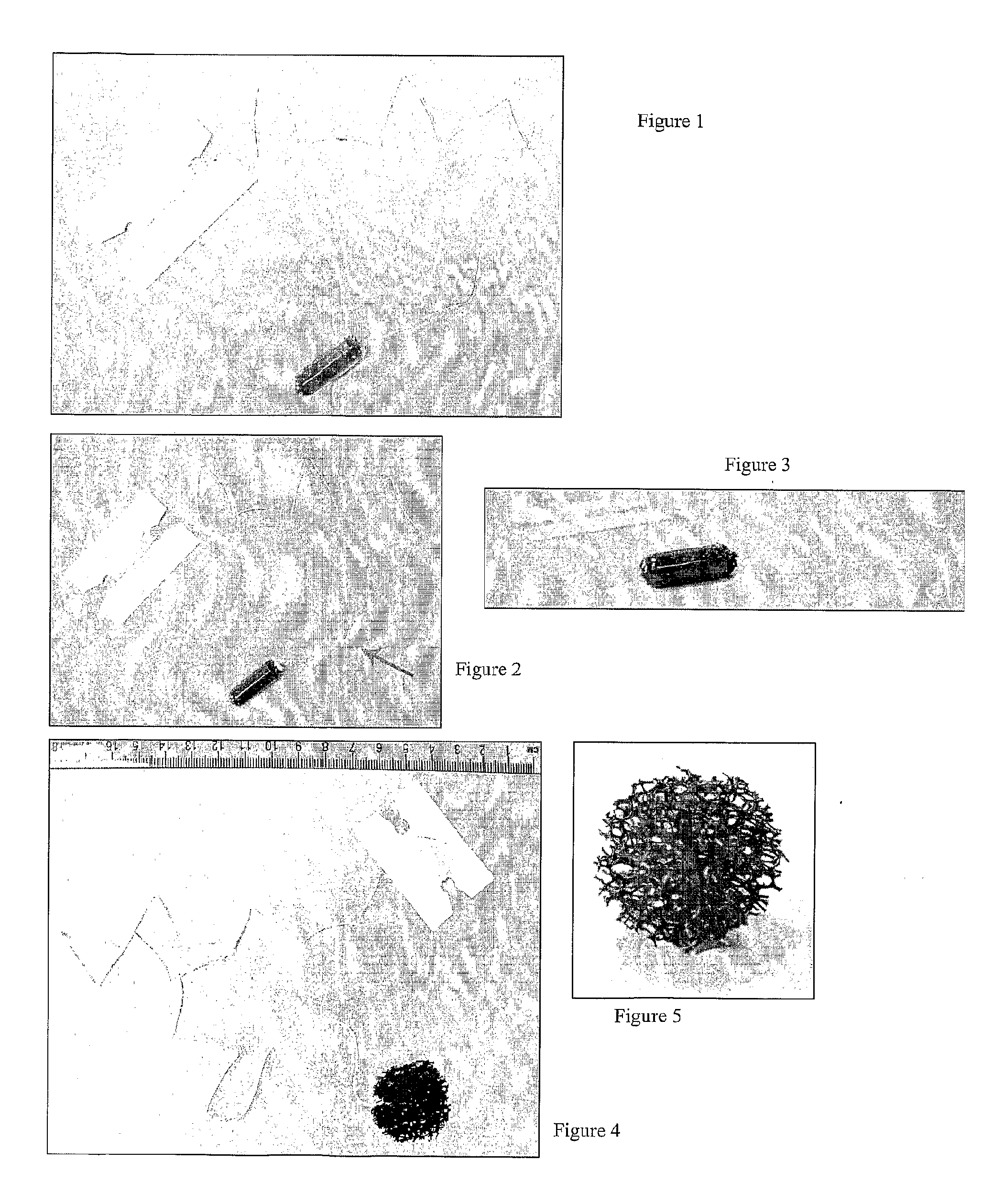Diagnostic Kits and Methods for Oesophageal Abnormalities
a technology for oesophageal abnormalities and diagnostic kits, which is applied in the field of methods for detecting oesophageal abnormalities, can solve problems such as thought unworkable, and achieve the effect of increasing the value of information obtained and robust combined diagnostic outpu
- Summary
- Abstract
- Description
- Claims
- Application Information
AI Technical Summary
Benefits of technology
Problems solved by technology
Method used
Image
Examples
example 1
Construction of a Sampling Device
[0148]Abrasive material is cut to the appropriate size. In this example, the material is approximately the size of the internal diameter of a human oesophagus, ie. approximately 3 cm in diameter.
[0149]In this example the material is a polyurethane mesh or cloth.
[0150]A cord is stitched into the material so that it can be retrieved after swallowing. (FIG. 3 shows the device with cord attached).
[0151]The cord is sufficiently long that part of it will comfortably remain outside the buccal cavity even after the device has been swallowed and resides in the stomach. The cord and stitching is sufficiently strong and resistant to digestion so that it can be used to retrieve the device after expansion.
[0152]The material is then compressed and inserted into a gelatine capsule (FIG. 1). The cord exits the capsule (FIG. 2 shows partially disassembled capsule with cord exiting). The device is then ready for use.
example 2
Sampling of Cells from the Surface of the Oesophagus
[0153]A device according to example 1 is provided. The subject may tale a local anaesthetic in the form of a lozenge or spray by way of preparation.
[0154]The device is introduced into the subject's buccal cavity with the distal end of the cord retained outside the buccal cavity.
[0155]The device is then swallowed. A drink of warm water aids this process and wets the cord, facilitating its passage down the oesophagus.
[0156]After approximately 10-20 seconds the device arrives in the subject's stomach, the cord exiting the stomach and lying in the oesophagus and the buccal cavity and outside to the point of retention.
[0157]After 5 minutes the capsule coat has dissolved and the abrasive polyurethane material has expanded back to its uncompressed size.
[0158]The device is then withdrawn by gentle tension on the distal end of the cord, pulling the device along the oesophagus and out of the buccal cavity, collecting oesophageal cells en rou...
example 3
Assaying for Cellular Markers
[0159]The withdrawn device of example 2 is washed to collect the oesophageal cells. These are then applied to slides and fixed for visualisation.
[0160]Mcm2 is the marker in this example.
[0161]The numbers analysed for this part of the study are 18 BE patients and 22 healthy controls). The age of the BE patients was 64.5±2.1 years compared to 31.2±1.6 for the healthy volunteers and the male:female ratio was biased towards a male population in both groups (1:5 and 1:1.7 respectively).
[0162]The PAP slides were used to assess the cellularity of the samples. An expert cytopathologist assessed the cellularity of the samples and 88% of the samples had a good to very good cellularity and 22% had an average cellularity.
[0163]FIG. 6 shows Representative pictures of monolayers from capsule sponge samples. Pap stained samples (A-C) and Mcm2 stained sample (C). The black arrows indicate the position of columnar cells and the red arrows the position of squamous cells.
[...
PUM
| Property | Measurement | Unit |
|---|---|---|
| diameter | aaaaa | aaaaa |
| chromosomal composition | aaaaa | aaaaa |
| time | aaaaa | aaaaa |
Abstract
Description
Claims
Application Information
 Login to View More
Login to View More - R&D
- Intellectual Property
- Life Sciences
- Materials
- Tech Scout
- Unparalleled Data Quality
- Higher Quality Content
- 60% Fewer Hallucinations
Browse by: Latest US Patents, China's latest patents, Technical Efficacy Thesaurus, Application Domain, Technology Topic, Popular Technical Reports.
© 2025 PatSnap. All rights reserved.Legal|Privacy policy|Modern Slavery Act Transparency Statement|Sitemap|About US| Contact US: help@patsnap.com


